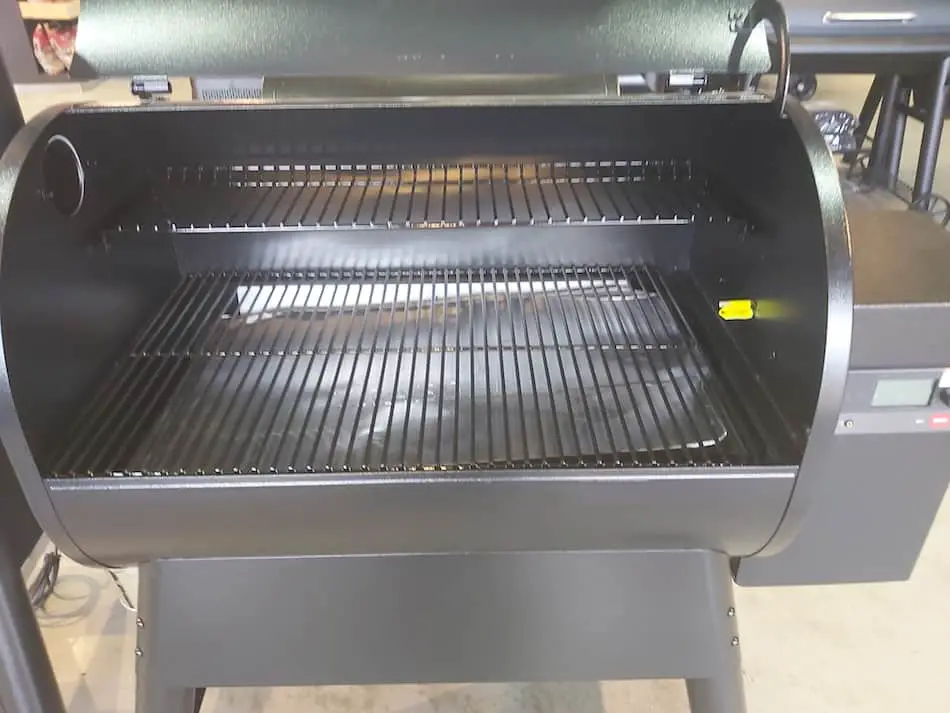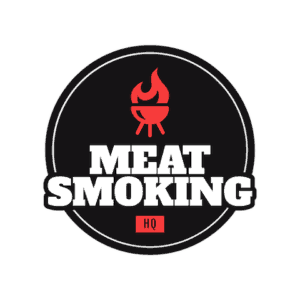Traeger’s best-selling grill, the Pro Series, now has two generations. Because of the popularity of the 1st generation models, Traeger continues to sell the Pro 34 — the larger grill in the 1st generation Pro Series. The Pro 780 is the upgraded version of the Pro 34 is the high-tech Pro 780. But is the upgraded Pro Series worth it? In this post, I’ll do a side-by-side comparison of the two larger Pro Series Grills—the Pro 34 and the Pro 780.
Key Differences
Let’s look at the key differences between the Pro 34 and Pro 780.
Price. The Pro 780 costs about $250 more than the Pro 34. See Upgraded Prices: Pro 780, Pro 34
Upgrades. The Pro 780 also has some major upgrades, such as:
- Wi-Fi technology
- The ability to control on a mobile phone.
- Higher cooking temperatures
- Quick temperature boost function.
- Integrated Traeger App
- Hundreds of recipes
- Guided cook function
- Pellet dump trapdoor
The Pro 34 has some advantages. These include:
- $250 saving
- A larger cooking capacity
- A wider grill
- Two temperature probes
- Straightforward grill with little technology.
- The Pro 34 is 155 pounds lighter.
Specifications – Pro 34 vs Pro 780
| Specs | Traeger Pro 34 | Traeger Pro 780 |
| Manufacturer | Traeger Pellet Grills | Traeger Pellet Grills |
| Price (US) | $508.22 grill only$869.85 grill + shelf + cover $719.90 grill + pellets Check Latest Price | $999.99 Check Latest Price |
| Weight | 136 lbs | 173 lbs |
| Dimension (DxHxW) | 27″ x 49″ x 53″ | 48.7” x 26.7” x 54.4” |
| Grill Capacity | 7 rib racks or 8 chicken or 40 burgers | 6 rib racks or 6 chickens or 34 burgers |
| Grilling area | 884 sq. in. | 780 sq. in. |
| Hopper Capacity | 18 lb | 18 lb |
| Hopper Cleanout | No | Yes |
| Technology | WiFIRE network connects your barbecue to your house WiFi, and even the Traeger application lets you manage it from anywhere. | |
| Special Features | TurboTemp | |
| Connectivity | Digital Pro Controller | WiFi Smart Home Technology, or bypass Wi-Fi and use regular digital controller. |
| Power source | 100% All-natural Wood pellets | 100% All-natural Wood pellets |
| Colour Variations | Bronze, Black | Bronze, Black |
| Outer Material | Steel | Steel |
| Inner Material | Stainless Steel | Stainless Steel |
| Wheels | All-terrain wheels | All-terrain wheels |
| WiFIRE Enabled | Yes |
Is The Pro 780 Worth The Money?
Are the extra features on the Pro 780 worth the extra money? Although some features are convenient, they won’t make your food taste that much better.
Tech Differences
The Pro 780 includes a GrillGuide. These recipes are easily downloaded directly onto the pellet grill. This may be useful for some people, but experienced pitmasters might question the methods in some recipes.
The Cloud. The 780 Pro Series also gives you the ability to store your cook data onto the Traeger Cloud. Historical session data is useful when planning future cooks.
Cooking Area Differences
- The Pro 34 has 104 square metres of more cooking area than the newer Pro 780.
- The Pro 34 has 884 square inches of cooking area whereas the newer Pro 780 only has 780 square inches of cooking area.
- The Pro 780 can cook 34 burgers, 6 whole chickens, or 6 pork butts. The older Pro 34 can cook 40 burgers, or 7 racks of ribs, or 8 whole chickens.
So when comparing the two grills, the Pro 32 can cook six more burgers and two more whole chickens. So if you want more grilling space, the older Pro 34 wins out.
With the Pro 34, on the top rack you can cook 238 square inches of meat, while on the main rack down the bottom you can cook on 646 square inches grilling area. This equates to a total cooking capacity of 884 square inches.

| Features | Traeger Pro 34 | Traeger Pro 780 |
| Temperature Control | Digital Temperature Controler | Advanced Grilling Logic Technology |
| Max Temperature | 450 °F | 500 °F |
| Cooking Methods | 6 in 1 versatility cooking (smoke, bake, roast, bbq, braise and bake) | 6 in 1 versatility cooking (smoke, bake, roast, bbq, braise and bake) |
| Advanced Grilling | Yes | Yes |
| Food production | 12 to 20 people | 13-18 people |
| Double Side Wall Insulation | No | No |
| Downdraft Exhaust System | No | No |
| Standard Size | Extra large | Large sized |
| Meat Probe | Dual | Single |
| All Terrain Wheels | Yes | Yes |
| Digital Pro Controller | Yes | Traeger Controller with WiFIRE® Technology |
| Locking Caster Wheels | No | Yes |
| Turbo Temperature | Yes | Yes |
| SawHorse Chassis | Yes | No |
Size Differences
- The Pro 34 is 53 inches wide, 49 inches high, with a depth of 27 inches The grill weighs in at 136 lb.
- The upgraded version of this grill, the Pro 780, weighs 155 lb, is 55 in height, 49 in wide, with a depth of 27 inches.
- The Pro 34 is 4 inches wider than the Pro 780.
- The Pro 780 is 6 inches higher than the Pro 34.
- Both the Pro 780 and the Pro 34 have a 27 inch depth.
- The Pro 780 is 19 lbs heavier than the Pro 34. The Pro 780 weighs 155 lb and the Pro 34 weighs 136 lb.
Temperature Differences
One of the most significant differences between the Pro 780 and the Pro 34 is the temperature differences. The Pro 34 can reach a high temperature of 450° F, whereas the newer Pro 780 can reach 500° F. However, this isn’t important if you only do low-and-slow cooking.
Turbo Temp
A new feature of the 2nd generation Pro Series is the Turbo Temp function. This feature allows you to start up your grill much quicker, and it will reach your target temperature much sooner.
TurboTemp is useful after you’ve opened the grill lid to check, spritz or wrap your meat. The temperature boost helps the grill quickly get back up to your cooking temperature.
This is especially important in cold weather. In winter, it can take a long time to get your grill back up to temp.
Differences In Hopper Capacity
The Pro 34 and the Pro 780 have a pellet hopper capacity of 18 lb.
An 18 lb pellet hopper is ideal for long cooks, and you shouldn’t have to refill very often. The Traeger Ironwood holds 20 pounds, and the Timberline holds 24 lb of pellets.
Price Difference
The Pro 780 costs around $1,000 and the Pro 34 costs about $750. So there’s a $250 difference between the 1st and 2nd generation Pro Series.
So What’s The Verdict?
So is the Pro 780 worth the extra $250? The price difference is the same cost as a high-tech Wi-Fi thermometer like Fireboard or Tappecue.
If you don’t want a high-tech grill, then I don’t think the extra $250 is worth it—especially if you already have a Wi-Fi thermometer.
| Final Comparison | Traeger Pro 34 | Traeger Pro 780 |
| Convenience | Better | Good |
| Affordability | Better | Good |
| Eco-friendliness | Good | Good |
| Durability | Good | Better |
| Beginner Friendly | Better | Good |
| Easy to Assemble | Good | Better |
Other Traeger Models
If you want to jump up to the next level, the Ironwood and the Timberline offer more features. The major difference between these models is the insulation, and the size.
| Traeger Model | Price |
| Ranger (portable) | $449 (see latest) |
| Tailgater (portable) | $529 (see latest) |
| Pro 22 (Gen 1) | $599 (see latest) |
| Pro 34 (Gen 1) | $699 (see latest) |
| Pro 575 | $899 (see latest) |
| Pro 780 | $999 (see latest) |
| Ironwood 650 | $1399 (see latest) |
| Ironwood 885 | $1599 (see latest) |
| Timberline 850 (Gen 1) | $2099 (see latest) |
| Timberline 1300 (Gen 1) | $2299 (see latest) |
| Timberline | $3499 (see latest) |
| Timberline XL | $3799 (see latest) |
The Timberline and the Ironwood series are hi-tech, and come with a Wi-Fi controller.
As the Traeger go up in size and quality, so too does the thickness of the metal. If you live in a cold climate, I would highly recommend a Timberline or an Ironwood.
The Ironwood is the next level up from the Pro Series. The cost is about $1,400—which is a big upgrade.
The Ironwood comes into two different models, the 650, and 885. The larger Ironwood model can cook 7 racks of ribs, 10 whole chickens and 9 pork butts.
The Timberline 1300 is the top-of-the-line Traeger. With the Timberline, you can cook year-round—no matter how cold it is outside.
The Pro Series doesn’t handle the cold, so you need an insulated blanket for winter cooking.
Timberline has thick steel, so it can hold in the heat. This means you can burn through fewer pellets, and cook to a schedule.
The Timberline also has 1300 square inches of cooking space, which means you can cook 15 racks of ribs, or 12 whole chickens, or 12 pork butts.
Expect to pay over $2,000 for the Timberline, but it’s worth every cent if you can afford it.
Other Traeger Reviews:
Traeger Tailgater vs The Pro 22 – What’s The Best Small Traeger?
Ranger vs Tailgater – We Compare The Portable Traeger Grills
Pro 575 vs Pro 22 – A Side-By-Side Comparison
Pro 575 vs Pro 780 – What’s The Difference?
Timberline 1300 vs 850 – A Detailed Comparison
Ironwood vs Pro Series – We Review Both Series
Pro 34 vs 780 – A Side-By-Side Comparison
Ironwood vs Timberline – We Compare Traeger’s High-End Grills

